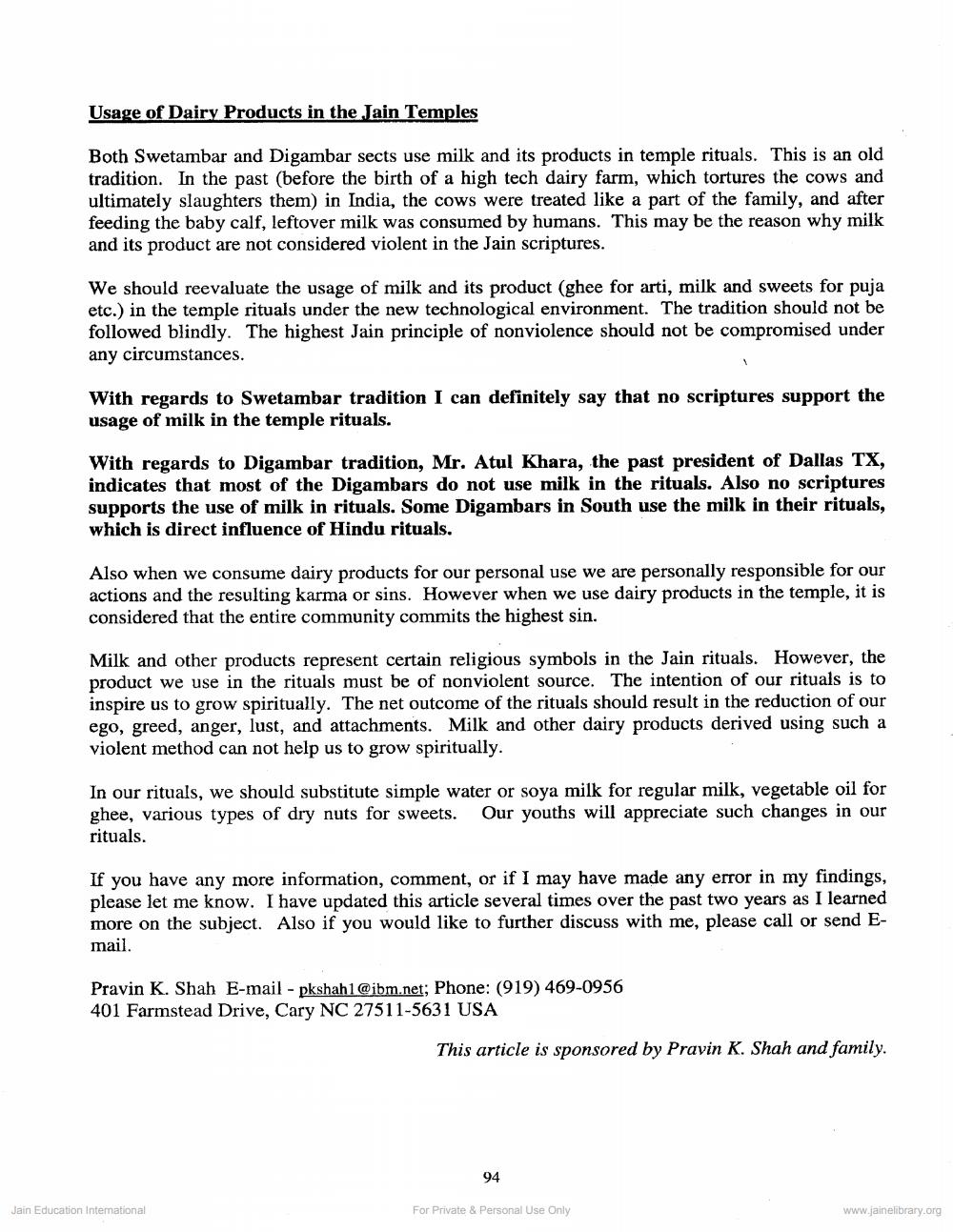________________
Usage of Dairy Products in the Jain Temples
Both Swetambar and Digambar sects use milk and its products in temple rituals. This is an old tradition. In the past (before the birth of a high tech dairy farm, which tortures the cows and ultimately slaughters them) in India, the cows were treated like a part of the family, and after feeding the baby calf, leftover milk was consumed by humans. This may be the reason why milk and its product are not considered violent in the Jain scriptures.
We should reevaluate the usage of milk and its product (ghee for arti, milk and sweets for puja etc.) in the temple rituals under the new technological environment. The tradition should not be followed blindly. The highest Jain principle of nonviolence should not be compromised under any circumstances.
With regards to Swetambar tradition I can definitely say that no scriptures support the usage of milk in the temple rituals.
With regards to Digambar tradition, Mr. Atul Khara, the past president of Dallas TX, indicates that most of the Digambars do not use milk in the rituals. Also no scriptures supports the use of milk in rituals. Some Digambars in South use the milk in their rituals, which is direct influence of Hindu rituals.
Also when we consume dairy products for our personal use we are personally responsible for our actions and the resulting karma or sins. However when we use dairy products in the temple, it is considered that the entire community commits the highest sin.
Milk and other products represent certain religious symbols in the Jain rituals. However, the product we use in the rituals must be of nonviolent source. The intention of our rituals is to inspire us to grow spiritually. The net outcome of the rituals should result in the reduction of our ego, greed, anger, lust, and attachments. Milk and other dairy products derived using such at violent method can not help us to grow spiritually.
In our rituals, we should substitute simple water or soya milk for regular milk, vegetable oil for ghee, various types of dry nuts for sweets. Our youths will appreciate such changes in our rituals.
If you have any more information, comment, or if I may have made any error in my findings, please let me know. I have updated this article several times over the past two years as I learned more on the subject. Also if you would like to further discuss with me, please call or send Email.
Pravin K. Shah E-mail - pkshah1 @ibm.net; Phone: (919) 469-0956 401 Farmstead Drive, Cary NC 27511-5631 USA
Jain Education International
This article is sponsored by Pravin K. Shah and family.
94
For Private & Personal Use Only
www.jainelibrary.org




